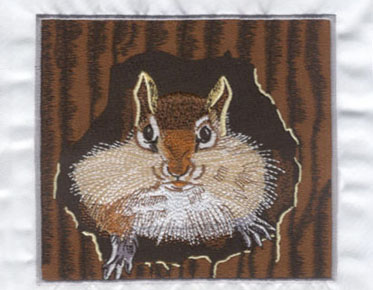The Importance of Understanding Different Types of Fabric for Embroidery Digitizing
Embroidery digitizing is a process of
converting a design or logo into a digital file that can guide an embroidery
machine to stitch the design onto a piece of fabric. The technology has brought
great advances to the embroidery industry, making it more efficient and faster
than before. Despite the progress made, the choice of fabric is still a crucial
aspect to consider. The right fabric choice can greatly affect the final
outcome of the project. In this article, we will explore the different types of
fabric used in embroidery digitizingand the significance of understanding them.
Cotton: A Natural Choice
Cotton is a natural, breathable fabric that
is commonly used in embroidery digitizing. It's a great choice for projects
that will be worn next to the skin, as it's soft and comfortable. Cotton is
also a durable fabric, which makes it a good choice for items that will be worn
or used frequently. It is perfect for t-shirts, baby clothing, and other
apparel items.
Polyester: A Synthetic Alternative
Polyester is a synthetic fabric that is
often used in embroidery digitizing because it's strong and durable. It's also
less prone to shrinking or stretching than other fabrics, which makes it a good
choice for items that will be washed or exposed to the elements. Polyester is a
great choice for sportswear, team uniforms, and other activewear items.
Nylon: A Durable Fabric
Nylon is a synthetic fabric that is known
for its strength and durability. It's often used in embroidery digitizing for
items like sportswear and outdoor gear, as it's resistant to moisture and
abrasion. Nylon is perfect for bags, backpacks, and other outdoor gear.
Rayon: A Soft and Comfortable Choice
Rayon is a natural fabric that is made from
cellulose fibers. It's soft and comfortable, and is often used in embroidery
digitizing for items like clothing and home decor. Rayon is great for dress
shirts, blouses, and other formal wear.
Linen: A Strong and Durable Fabric
Linen is a natural fabric that is made from
the fibers of the flax plant. It's known for its strength and durability, and
is often used in embroidery digitizing for items like table linens and napkins.
Linen is perfect for tablecloths, napkins, and other home decor items.
Leather: A Classic Choice
Leather is a natural fabric that is made from the hides of animals. It's strong and durable, and is often used in embroidery digitizing for items like bags and wallets. Leather is perfect for bags, wallets, and other leather goods.
Choosing the right fabric for your embroidery digitizing project is essential to the final outcome. The fabric you choose will affect the look, feel, and durability of the final product. Understanding the properties of different fabrics will help you make an informed decision and choose the best fabric for your project. Whether you're working on a personal project or creating a product for a business, taking the time to understand the different types of fabric available for embroidery digitizing will ensure that your final product is of the highest quality.


